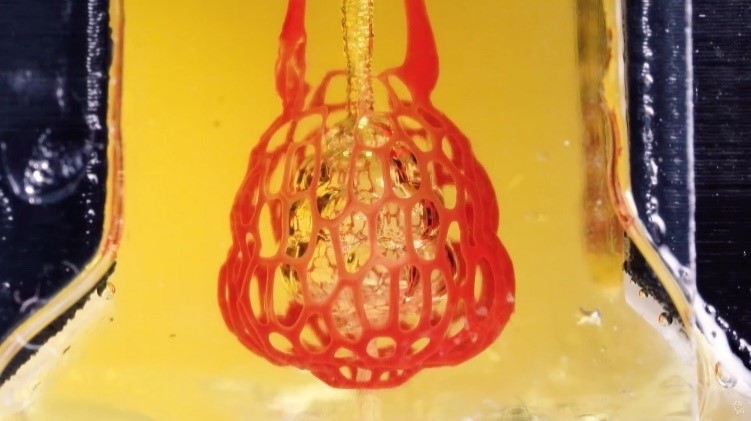 A bioprint of the small air sac in the lungs with red blood cells moving through a vessel network supplying oxygen to living cells. Credit: Rice University.
A bioprint of the small air sac in the lungs with red blood cells moving through a vessel network supplying oxygen to living cells. Credit: Rice University.A team of bioengineers, funded in part by NIGMS, has devised a way to use 3D bioprinting technology to construct the small air sacs in the lungs and intricate blood vessels. When hooked up to a machine, the air sacs can “breathe,” and the blood flowing through the tiny blood vessels can take up oxygen, much like they would in an animal’s body. In the long term, this technology may allow the production of replacement organs for patients who need them. Visit the NIH Director’s Blog to read more and watch a video from Rice University’s Miller Lab.

